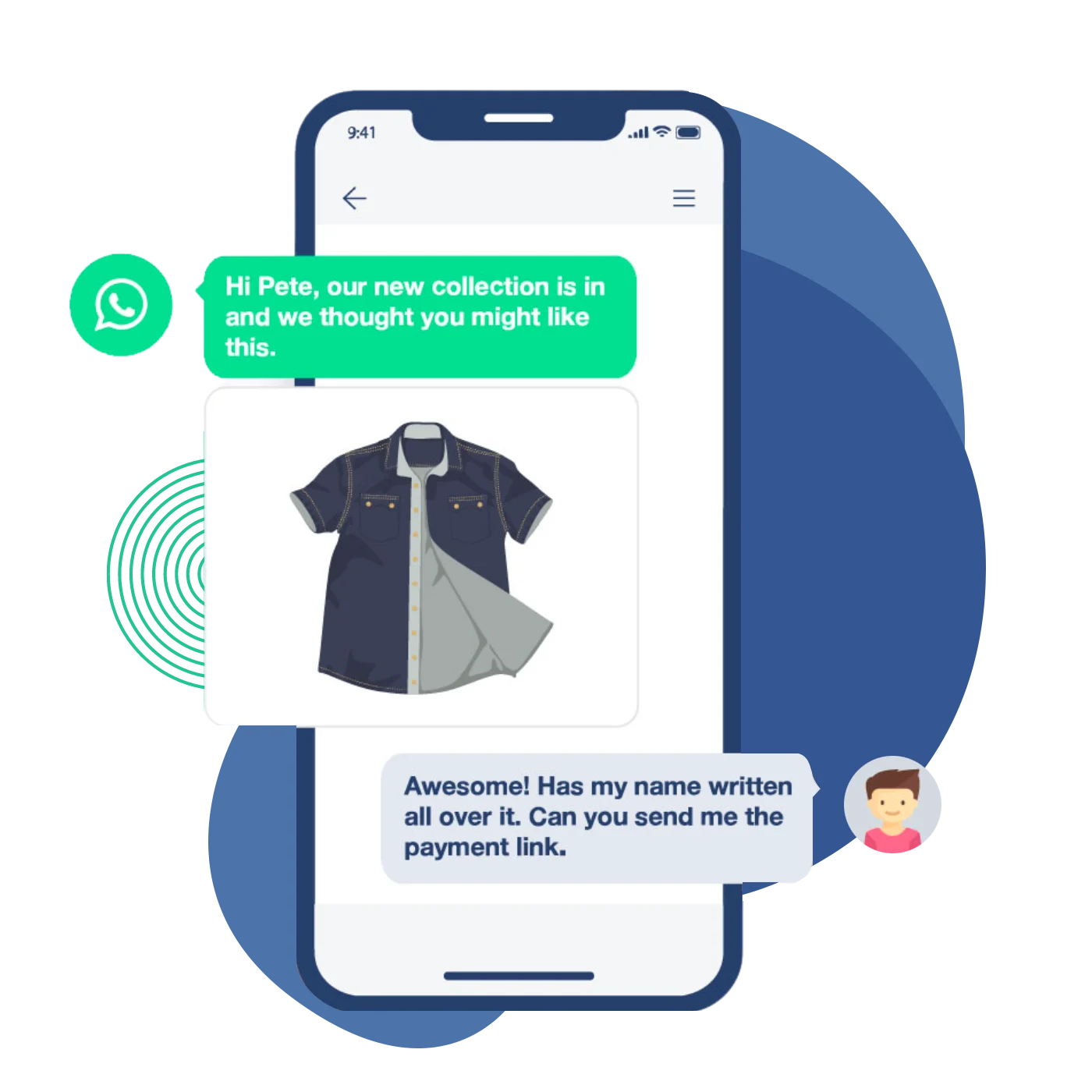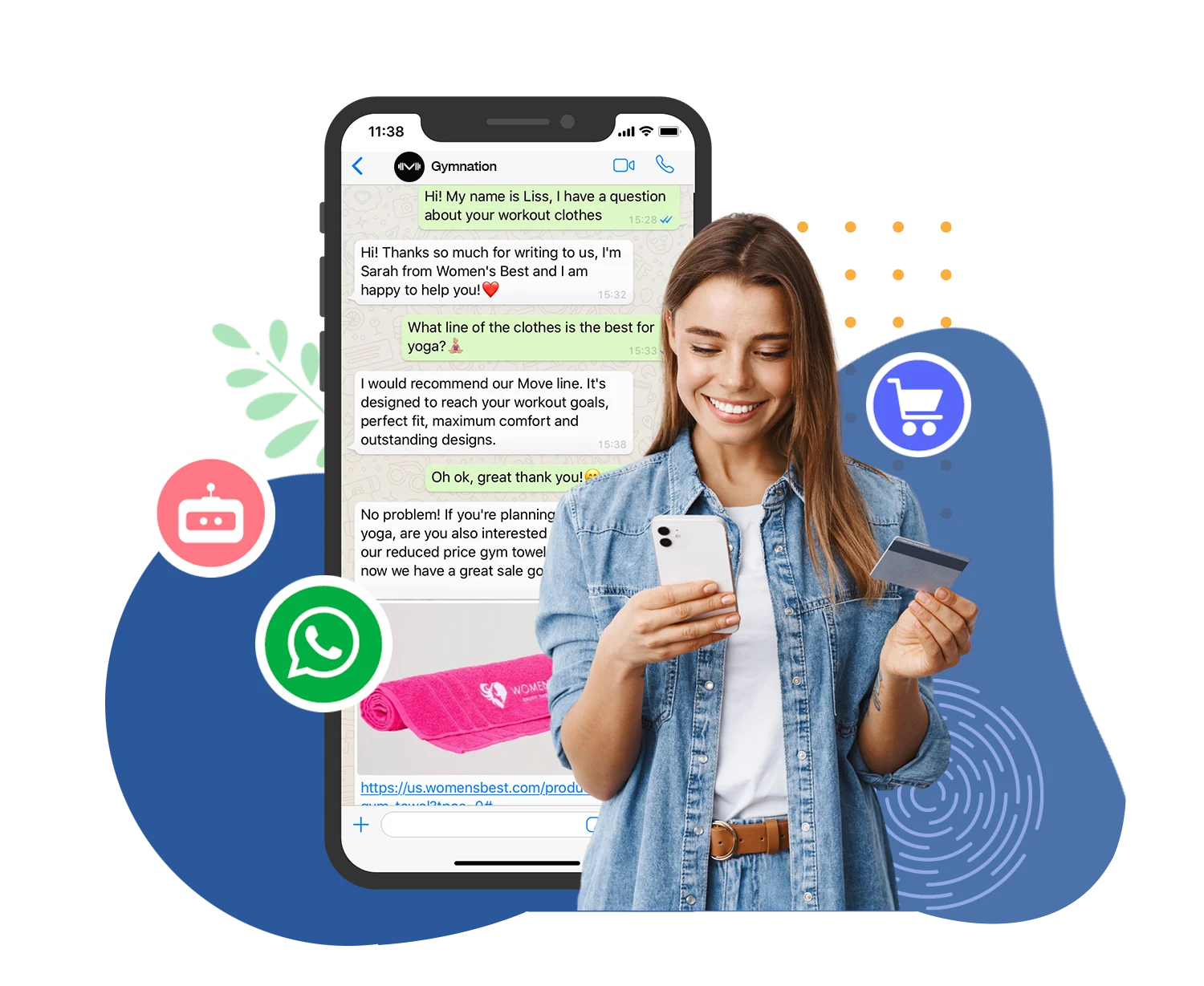Conversational Commerce and the Customer Journey
How does Conversational Commerce work at every part of the customer’s journey? Let’s show you!
By mapping out the various stages of the customer journey and thoughtfully planning your engagement approach for each stage, you can guarantee that you provide value to your customers throughout every touchpoint.






Stage 1: Awareness
This stage is all about introducing your product or service to your target audience.
It relies heavily on marketing and advertising with well-targeted material.
You need to make sure your customer understands what you do or what your product is and how it can help them; all while sparking interest so they engage with you.
So how do we do this using Conversational Commerce?
Intriguing Broadcast Messages
Use a broadcast message over WhatsApp or any other messaging app service to send out information about your product or service. You can use an initiator message to pique customer interest and include a quick reply button for the prospect to respond to if they have more questions.
Drive traffic to your Communication App
Drive traffic to your messaging app, such as your WhatsApp Channel using a variety of methods, including conversaional ads, social media posts, and links from your website. Once you have that traffic, it's important to engage with customers and get them interested in your product or service through a Chatbot.

Stage 2: Consideration
Now, we move on to the consideration stage, where the customer is interested in your product or service. They are researching features, options, and suppliers to make a final decision.
Here's where a conversational app such as WhatsApp can come in handy!
Send personalized suggestions
You can use some cool features of the WhatsApp API to provide more info about products your customer has already shown interest in. Just send links, customer reviews, or even product videos alongside your regular text messages.
Automate Conversations
Don't forget to take advantage of chatbots too. They can automate customer interactions, freeing up your time to focus on other things. You can always pass the conversation to a live agent if needed.
Live Agents
Make sure you're super responsive to any questions or concerns the chatbot was unable to address, ideally with a live agent. This will build trust and show that you care about their needs.
WhatsApp Catalog
This feature allows businesses to create digital catalogs showcasing their products or services on the WhatsApp messaging platform. It enables businesses to share product details, pricing, images, and even links to their website or online store with customers. This makes it easier for customers to browse and inquire about products directly within the WhatsApp chat all within the familiar messaging app.

Stage 3: Decision
And now, we’ve arrived at the decision stage – the moment your customers decide to buy your product or service.
This is where the sales process comes into play, and your focus should be on making the purchase process as easy as possible.
Here's where a conversational app such as WhatsApp can come in handy!
Cart View and Checkout Page
When customers browse through a business's product catalog, they can easily add items to their cart, creating a virtual shopping basket. The cart view allows customers to review their selected items, make modifications if needed, and proceed to the checkout page. The checkout page is designed to capture essential details such as shipping address, payment method, and any additional preferences. This streamlined process enables customers to finalize their purchases efficiently.
Send Important Links Automatically
With a chatbot, you can send payment links directly to your customers at the perfect moment, simplifying the buying process for them. You can also update them on the status of their order in real-time.

Stage 4: Value realization and retention
The customer value realization and retention stage is a crucial part of the customer journey At this point, the customer has made a purchase and experienced your product or service.
Your goal now is to ensure that they continue to see value in what you offer and remain loyal to your brand.
It’s important to keep engaging with your customers through channels like Whatsapp, offering excellent customer service, and continually improving to meet their changing needs.
By doing so, you can create a lasting relationship with your customers and increase their lifetime value to your business.
Customer Retention Strategies
To keep your customers coming back, focus on customer retention strategies like loyalty programs and discounts, all of which can be managed with the help of a messaging app chatbot. To ensure customer satisfaction you can send customer surveys, follow-up messages, or even requests for reviews.
Abandoned Cart Messages
When a customer adds a product to their cart and doesn’t complete the purchase, the business can send a private automated message a few hours later to the customer asking if they would like to complete their purchase or if they have any questions.
Upsell or Cross-Sell Opportunities
By leveraging customer data, you can analyze a customer's past purchases, preferences, and interactions to generate tailored product recommendations. By highlighting complementary products or upgrades, chatbots can effectively upsell or cross-sell, increasing the chances of additional purchases and enhancing customer satisfaction by delivering a personalized shopping experience.

Why Invest in Conversational Marketing?

Accelerate your sales
Our conversational commerce solutions enable sales, customer support, and bulk messaging across platforms like WhatsApp.

Generate leads
Provide consumers with a hassle-free and efficient way to schedule appointments, reservations, and test drives at the exact moment when they are most engaged.

Re-target your customers
Drive sales by re-engaging customers across ad networks through personalized conversations to recover abandoned carts, collect feedback, and upsell products and services.
Not convinced? We have tons of other benefits
Our customers Share Their Stories








We’ve Driven Over 730,000 E-Commerce Transactions For Our Clients
